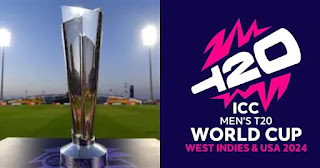वैश्विक व्यापार तनाव और आर्थिक मंदी: दुनिया के लिए एक गंभीर चेतावनी
परिचय
2025 की शुरुआत में जब दुनिया COVID-19 महामारी, रूस-यूक्रेन युद्ध और जलवायु संकट जैसे झटकों से उबरने की कोशिश कर रही थी, तब एक नई चुनौती ने वैश्विक अर्थव्यवस्था को घेर लिया — व्यापार तनाव और संभावित वैश्विक आर्थिक मंदी। विशेष रूप से अमेरिका और चीन के बीच बढ़ते व्यापारिक तनावों ने वैश्विक आपूर्ति श्रृंखला, निवेश, विनिर्माण और उपभोक्ता मांग पर गहरा असर डाला है।
संयुक्त राष्ट्र की ताज़ा रिपोर्ट के अनुसार, 2025 में वैश्विक आर्थिक वृद्धि दर घटकर 2.3% रहने की संभावना है, जबकि 2024 में यह 2.8% थी। इस गिरावट का मुख्य कारण व्यापार में अनिश्चितता और महाशक्तियों के बीच टकराव है।
🔥 व्यापार युद्ध: अमेरिका बनाम चीन
अमेरिका और चीन के बीच व्यापारिक संबंध पिछले एक दशक से तनावपूर्ण रहे हैं। लेकिन 2025 में डोनाल्ड ट्रम्प के पुनः राष्ट्रपति बनने के बाद स्थिति और अधिक बिगड़ गई है। ट्रम्प प्रशासन ने "अमेरिका फर्स्ट" नीति को फिर से लागू करते हुए चीन से आयातित सैकड़ों वस्तुओं पर 145% तक टैरिफ लगा दिए हैं।
अमेरिका के कदम:
हाई-टेक उत्पादों पर भारी टैरिफ।
चीनी कंपनियों के खिलाफ तकनीकी प्रतिबंध।
अमेरिकी कंपनियों को चीन में निवेश करने से रोकने की कोशिश।
विशेष रूप से सेमीकंडक्टर, इलेक्ट्रिक वाहनों और AI सेक्टर में सख्ती।
चीन की प्रतिक्रिया:
अमेरिकी कृषि उत्पादों और ऑटोमोबाइल्स पर प्रतिशोधी टैरिफ।
आपूर्ति श्रृंखला को रूस, ब्राजील और अफ्रीका जैसे विकल्पों की ओर मोड़ना।
WTO में औपचारिक शिकायत दर्ज कराना।
"Made in China 2025" नीति को तेज़ी से लागू करना।
इस व्यापार युद्ध का असर न केवल दोनों देशों तक सीमित है, बल्कि वैश्विक स्तर पर इसकी प्रतिध्वनि हो रही है।
📉 वैश्विक आर्थिक मंदी की संभावना
🌍 1. विकास दर में गिरावट
संयुक्त राष्ट्र, विश्व बैंक और IMF ने वैश्विक विकास के पूर्वानुमानों को घटा दिया है। व्यापार तनाव के चलते निवेश में गिरावट, उत्पादन में बाधा, और वैश्विक व्यापार प्रवाह में रुकावटें देखी जा रही हैं।
एशिया: चीन, भारत, जापान जैसे देशों के निर्यात में गिरावट।
यूरोप: यूरोपीय यूनियन में महंगाई और बेरोजगारी की दर बढ़ रही है।
अमेरिका: घरेलू महंगाई में फिर से उछाल।
🏭 2. विनिर्माण और उद्योगों पर असर
सेमीकंडक्टर, इलेक्ट्रॉनिक्स, टेक्सटाइल, स्टील और ऑटोमोबाइल जैसे क्षेत्र प्रभावित हो रहे हैं। कई कंपनियों ने उत्पादन घटा दिया है या संयंत्रों को स्थानांतरित करने की प्रक्रिया शुरू कर दी है।
उदाहरण: Nvidia, जो अपने चिप्स का बड़ा हिस्सा चीन में बेचती है, ने 2025 की पहली तिमाही में $5 बिलियन के नुकसान का अनुमान जताया है।
📈 3. महंगाई और उपभोक्ता संकट
टैरिफ का असर सीधा उपभोक्ता तक पहुंचता है। अमेरिका में रोजमर्रा की चीज़ें महंगी हो रही हैं। चीन में भी विदेशी ब्रांडों के दाम बढ़ रहे हैं। इससे खपत में गिरावट आ रही है, जो मंदी की ओर संकेत करता है।
🔄 आपूर्ति श्रृंखला में अस्थिरता
2020 में महामारी के बाद दुनिया ने सीखा था कि अत्यधिक वैश्विक निर्भरता खतरनाक हो सकती है। अब 2025 में व्यापार युद्ध ने उस डर को फिर से जीवित कर दिया है।
चीन प्लस वन रणनीति को गति मिली है, जहां कंपनियाँ चीन के अलावा अन्य देशों (जैसे भारत, वियतनाम, इंडोनेशिया) में उत्पादन बढ़ा रही हैं।
अमेरिका ने कई महत्वपूर्ण वस्तुओं (जैसे दवाइयां, इलेक्ट्रॉनिक पुर्जे) के लिए घरेलू उत्पादन को बढ़ावा देना शुरू किया है।
लेकिन इस प्रक्रिया में लागत बढ़ी है, जिससे वैश्विक बाजारों में अस्थिरता बढ़ रही है।
📊 वित्तीय बाजारों पर असर
व्यापार तनाव के कारण वैश्विक शेयर बाजारों में अस्थिरता बढ़ गई है:
अमेरिका का NASDAQ और Dow Jones नीचे गए हैं।
एशियाई बाजारों में गिरावट की लहर दौड़ पड़ी है।
तेल और गैस की कीमतों में उतार-चढ़ाव देखा गया है।
निवेशकों का विश्वास डगमगाने लगा है, और वे सोना जैसे सुरक्षित विकल्पों की ओर रुख कर रहे हैं।
🌐 अन्य देशों और क्षेत्रों की स्थिति
🇪🇺 यूरोपीय यूनियन
चीन और अमेरिका दोनों के साथ गहरे व्यापारिक संबंध रखने वाले यूरोपीय देश अब संकट में हैं। वे न तो किसी एक पक्ष का साथ खुलकर दे सकते हैं और न ही खुद को नुकसान से बचा पा रहे हैं।
🇮🇳 भारत
भारत को एक अवसर के रूप में देखा जा रहा है। वैश्विक कंपनियाँ चीन का विकल्प तलाश रही हैं और भारत उनमें प्रमुख है। लेकिन भारत को निवेश आकर्षित करने के लिए बुनियादी ढांचे, नीति स्थिरता और श्रम सुधारों की ज़रूरत है।
🌍 अन्य विकासशील देश
अफ्रीका, दक्षिण अमेरिका और दक्षिण एशिया के कई देश इस संघर्ष का शिकार हो सकते हैं — कच्चे माल की कीमतें बढ़ रही हैं, निर्यात कम हो रहा है, और विदेशी निवेश में गिरावट आई है।
🛡️ नीतिगत विकल्प और समाधान
अगर वैश्विक मंदी को टालना है, तो निम्नलिखित कदम ज़रूरी होंगे:
संवाद और कूटनीति: अमेरिका और चीन को टेबल पर लाना अनिवार्य है।
WTO की सशक्त भूमिका: वैश्विक व्यापार नियमों को मजबूत बनाना होगा।
वैश्विक सहयोग: G20, UN, IMF जैसे मंचों को सक्रिय भूमिका निभानी होगी।
विकासशील देशों की सहायता: आर्थिक संकट झेल रहे देशों को राहत पैकेज की ज़रूरत है।
🔮 भविष्य की राह: सहयोग या टकराव?
दुनिया दो रास्तों के बीच खड़ी है:
सहयोग का रास्ता: जहां अमेरिका-चीन तनाव को कम करके व्यापार और तकनीक में संतुलन बनाएं।
टकराव का रास्ता: जहां वैश्विक अर्थव्यवस्था दो खेमों में बंट जाए – एक अमेरिका-केंद्रित, दूसरा चीन-केंद्रित।
टकराव का रास्ता न केवल आर्थिक मंदी को जन्म देगा, बल्कि भविष्य की तकनीकी प्रतिस्पर्धा, डिजिटल ट्रेड, और ऊर्जा सुरक्षा जैसे मुद्दों को भी जटिल बना देगा।
📝 निष्कर्ष
व्यापार कोई युद्ध नहीं होता, बल्कि विकास का माध्यम होता है।
लेकिन जब इसे राजनीतिक शक्ति प्रदर्शन का उपकरण बना लिया जाता है, तो पूरी दुनिया उसकी कीमत चुकाती है।
2025 में वैश्विक व्यापार तनाव हमें यह सिखा रहा है कि सहयोग, नियमों का पालन और सामूहिक समाधान ही स्थिर और समावेशी विकास का रास्ता हैं। यदि राष्ट्र अब भी न चेते, तो मंदी की आहट जल्द ही एक भयावह आर्थिक तूफान में बदल सकती है।

















